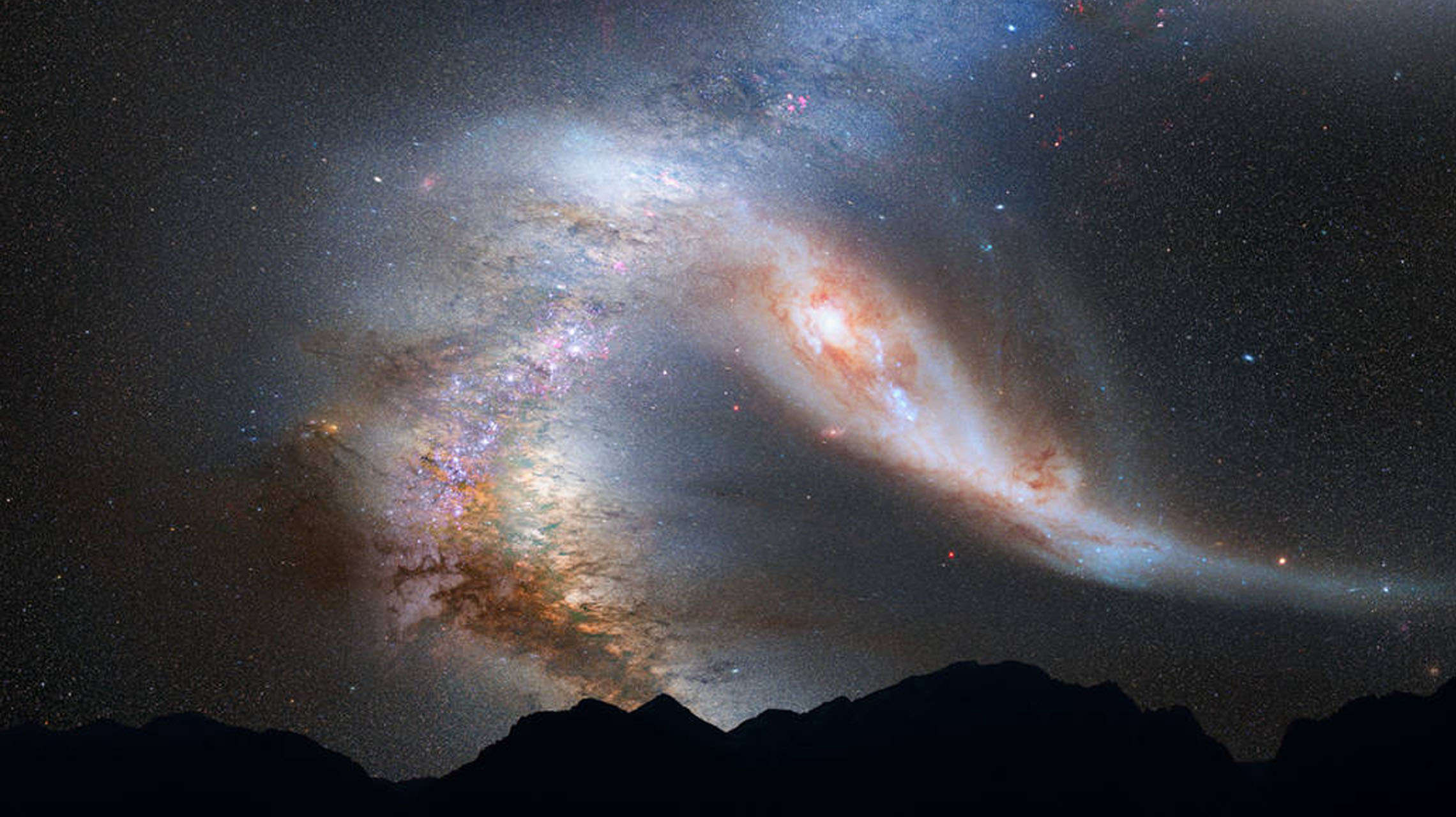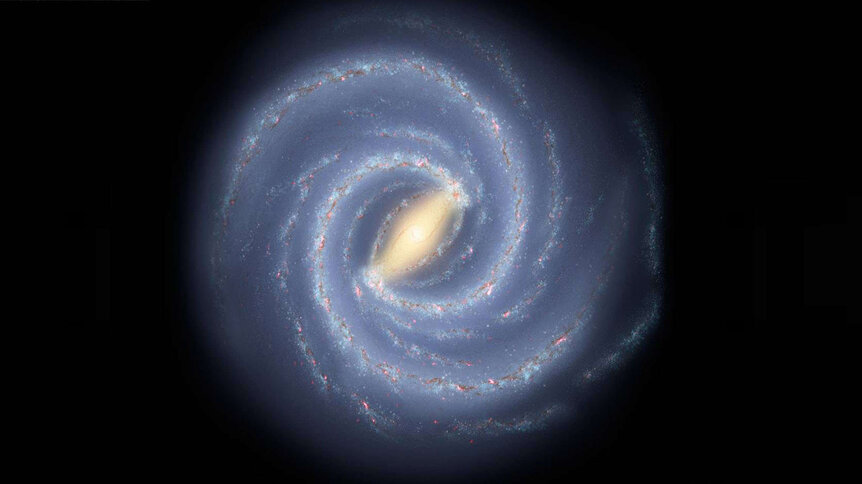Create a free profile to get unlimited access to exclusive videos, sweepstakes, and more!
Could the alleged black hole in the center of our galaxy be a ginormous glob of dark matter?

At the galactic core of the Milky Way lies the gaping maw of Sagittarius A*, a supermassive black hole that is forever devouring the remains of stars and dismembering anything that creeps too close—but wait.
Whatever is lurking in the heart of the galaxy might be something weirder and even more of an enigma than any black hole. Try dark matter. At least that is what a team of researchers believe after the suspicion raised by a huge gas cloud that passed what was allegedly a black hole gargantuan enough to shred it and feast on its remains. Instead, the cloud just floated by as if there was no monstrous gravitational force sneaking up from behind. That could be because there never was.
Many astronomers insist that there has been more than enough evidence to prove Sgr A* really is a supermassive black hole, though they have struggled with why that cloud, known as G2, escaped its cosmic jaws. Jorge Rueda is one of the researchers who believes they are mistaken. He co-authored a study recently published in Monthly Notices of the Royal Astronomical Society: Letters, in an effort to shed light on why Sgr A* might actually be a blob of dark matter.
“The motion of all stars in the Galaxy is telling us that dark matter is not only relevant in the periphery of the Galaxy, but also at the center,” Rueda told SYFY WIRE in an interview. “We have been able to show that a dense core of "darkinos" (dark matter particles of fermion nature) could explain the motion of G2 with nearly the same accuracy when compared with the model assuming a central supermassive black hole.”
Rueda’s simulation of the Milky Way actually explained the G2 conundrum with slightly better accuracy than the black hole model. It also explained the movements of other bodies around what is still thought to be a star-shredding monster by most scientists. S stars belong to the S-cluster that surrounds Sgr A*. While dark matter had been thought to exist in this cluster (as it does throughout the entire universe), the stars were still thought to be surrounding a supermassive black hole. The star S2 provided the most reliable data for Rueda and his team to study. S2 is highly luminous and close enough to Sgr A* to test its gravitational power.
So far, S2 has not fallen victim to the crushing gravity of a black hole. The researchers went even further to look into how 17 other S-stars were moving, and none proved them wrong. Darkinos are exotic subatomic particles that have flown under the radar until now. They are the dark matter equivalent of fermions, are supposedly scattered everywhere in our galaxy, and possibly the reason why objects on the edge of the Milky Way move faster than predicted. The explanation for the motion of stars in the center of the galaxy, according to Rueda, is the same.
“Since the distribution of dark matter is continuous, how it distributes at far distances and how it distributes in the core, or vice-versa, come out together,” he said. “You just cannot separate the two. “When a black hole is assumed, they are treated separately. A black hole at the center cannot explain the motion of the stars in the outskirts of the Milky Way, so a phenomenological distribution of dark matter is necessary to explain that.”
Strangely enough, there have been no studies on how the distribution of dark matter towards the galactic center proves the existence of a supermassive black hole. What Rueda’s team found was that a model which uses a dark matter core instead of a black hole explains how dark matter shapes the galaxy from the center all the way to its furthest reaches with zero gaps. But why would darkinos clumped together appear to be masquerading as a black hole? Dark matter particles interact by self-gravity, meaning that they are parts of a large body (the hypothetical clump thought to be Sgr A*) whose combined gravity keeps them together.
Even if Sgr A* is a mass of invisible dark matter, that doesn't necessarily rule out the existence of black holes. Like enormous stars that collapse in on themselves, he believes balls of darkinos cannot hold past a certain point and are also prone to collapsing into a supermassive black hole. Whether this is what happened in our galaxy remains a dark secret for now. Because it will probably be a while until we are able to detect dark matter, any random objects passing Sgr A* should keep their distance.
“We are not saying that black holes don't exist, or that there are no black holes at the centers of any galaxies,” Rueda said. “Our work actually introduces a solution to the problem of how to form supermassive black holes of hundreds of million solar masses that sit at the center of active galaxies.”



























